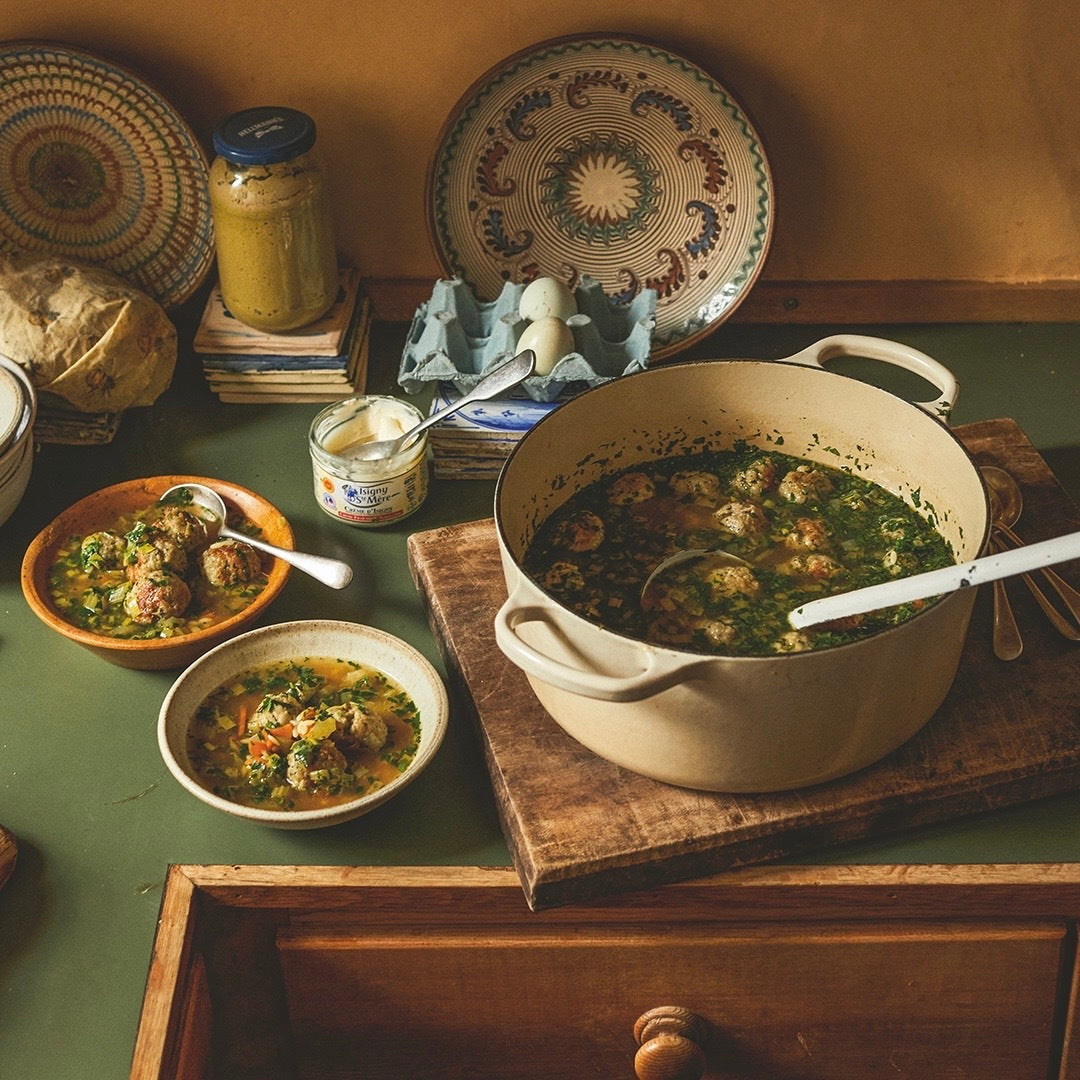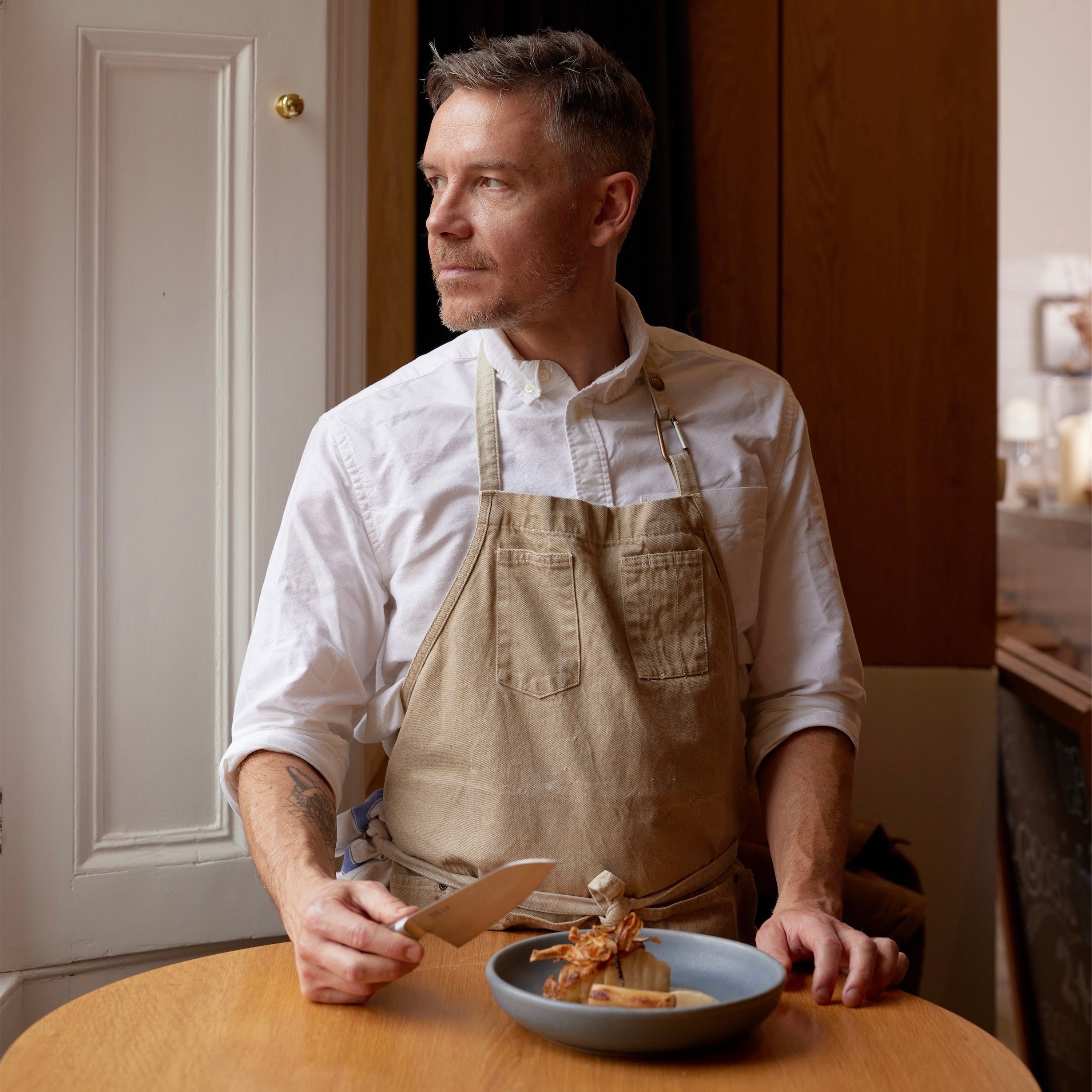By Seth Rowden
Anything with the power to take a life or sustain a life deserves our respect.
We create rituals around items of importance. We build customs around situations where there’s a chance of confusion or offence. For most of our existence, there were few things more essential to our survival than a knife.
Most knife customs exist to help us make a critical distinction: Is the blade about to be used as a tool or a weapon? Most knife customs and rituals essentially help to answer this question without the need to share a common language.
For instance, several cultures have a variation on the theme of giving a coin in exchange for a blade (or even placing a coin on top of the blade), making it clear that it’s a peaceful gesture rather than a threat or challenge. On the flip side, there’s also the legend that the deathly-sharp Japanese katana must ‘taste blood’ before it’s sheathed, as a mark of respect to the sword.
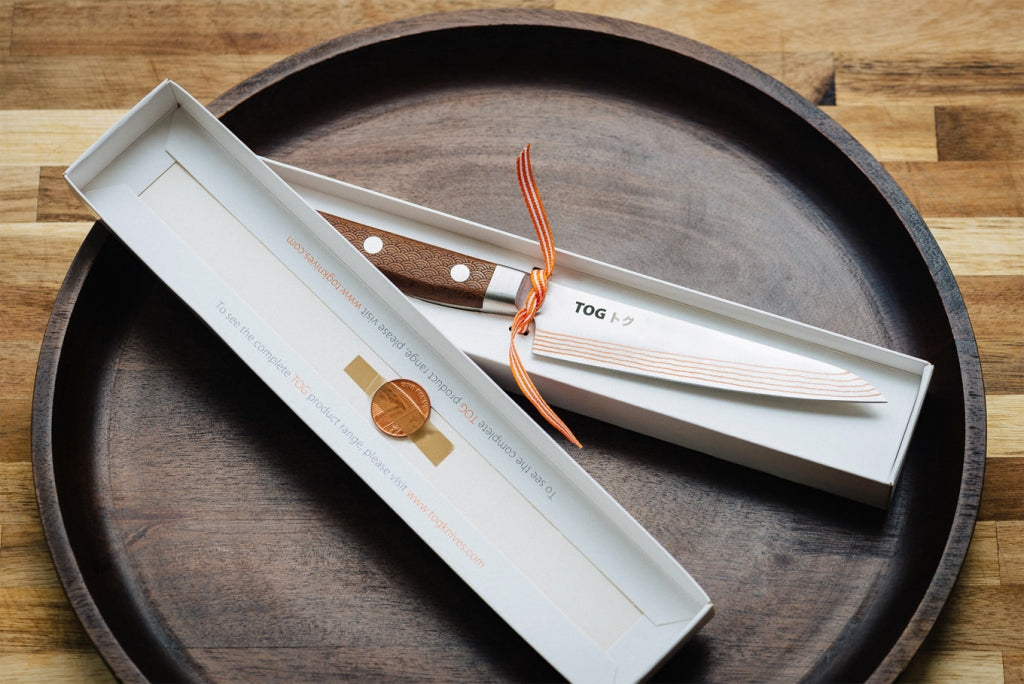
So, what about kitchen knives?
The rituals and culture around chefs’ knives are a little more nuanced. The stories are usually not wrapped around gesture and ceremony. Instead, they are buried deep within the purpose of the blade and the skill with which it’s used.
In a well-equipped kitchen, you might find cheese knives with their hooked noses, oyster shucking knives with their thick 3” pointed blade, truffle slicers with their flat edges, bread knives with their long serrated teeth, boning knives with their flexible narrow blades – all exceptional at their one specific task.
To understand the heritage of any kitchen knife, we must explore the customs and rituals of three culinary cultures: France, China, and Japan.
Most of us are familiar with the family of knives from the West. There’s the 8” chef’s knife that can take on almost any task. The handle is high, keeping our knuckles clear of the board as we rock the sharp blade through roasted meats, raw vegetables, and fragrant bunches of herbs. This muti-purpose blade is often the first knife people own – and sadly, sometimes the only knife they own.
Putting our knives down for a moment, did you know the Chinese were using chopsticks in 1000 BC? They believed that warlike instruments had no place at the table whatsoever, so they would prepare dishes into bite-sized pieces of food before being served. This belief has not only influenced the presentation of Chinese cuisine but also their selection of kitchen knives.
Chinese cuisine is often prepared on wooden chopping blocks that are much deeper than Western boards. Unlike Western knives, which have curved blades and are used in a rocking motion, Chinese knives are designed for an up-down cutting technique. The typical ‘chef’s knife’ in China is a cai dao (Chinese cleaver), which is much wider and doesn’t have a point like an 8” Western chef’s knife.
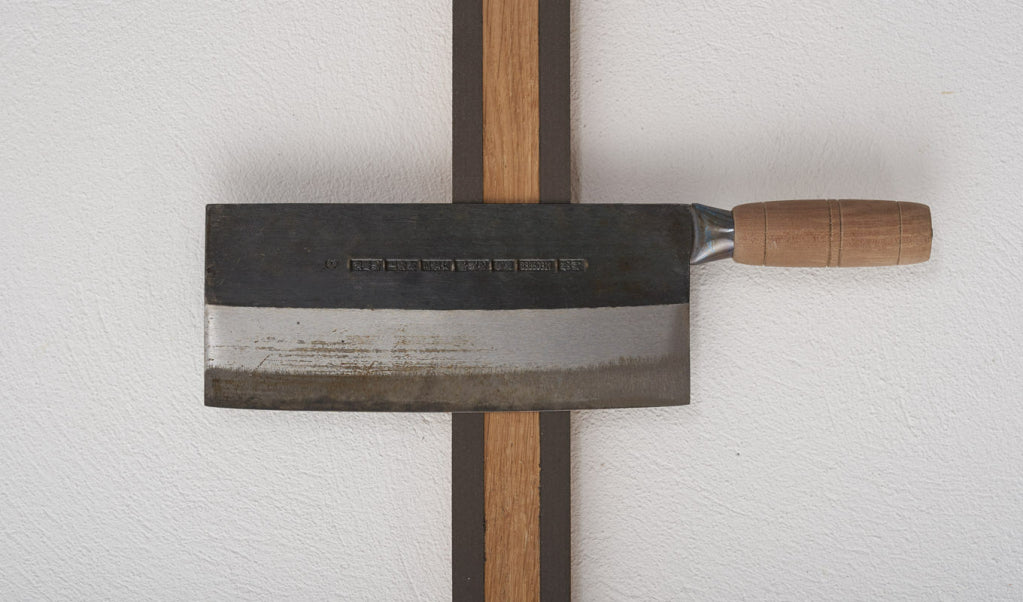
Meanwhile, Japanese knives evolved as much from a change in the law as a change of tastebuds. In 1868, Emperor Meiji was going through the process of ‘modernising’ Japan. He made it illegal to carry Samurai swords in public. He also popularised the consumption of meat-eating, which was previously not a widespread practice. This put a huge number of swordsmiths out of business. Instead of making weapons, they turned their skills to making kitchen knives with the same passion and dedication.
This was a gift to knife-making. These swordsmiths already knew how to combine several types of metal to make a blade that was strong enough not to shatter on contact. They brought all of this knowledge with them and applied it to kitchen knives.

This also explains the beautiful aesthetic of Japanese knives. These same techniques that have been passed down through the families of sword makers have also found their way into TOG knives. The distinctive antimicrobial copper stripes and layers of strengthened steel come from this ancient tradition. Indeed, our blades are made in Seki, arguably the most famous city in the world for Samurai swords.

Whereas Chinese knives are mostly used as a purely functional tool, many Japanese knives more closely resemble a piece of art. Nowhere is this more evident than within the swirling patterns of suminagashi – a technique that involves acid etching to replicate the aesthetic of traditional paper marbling.
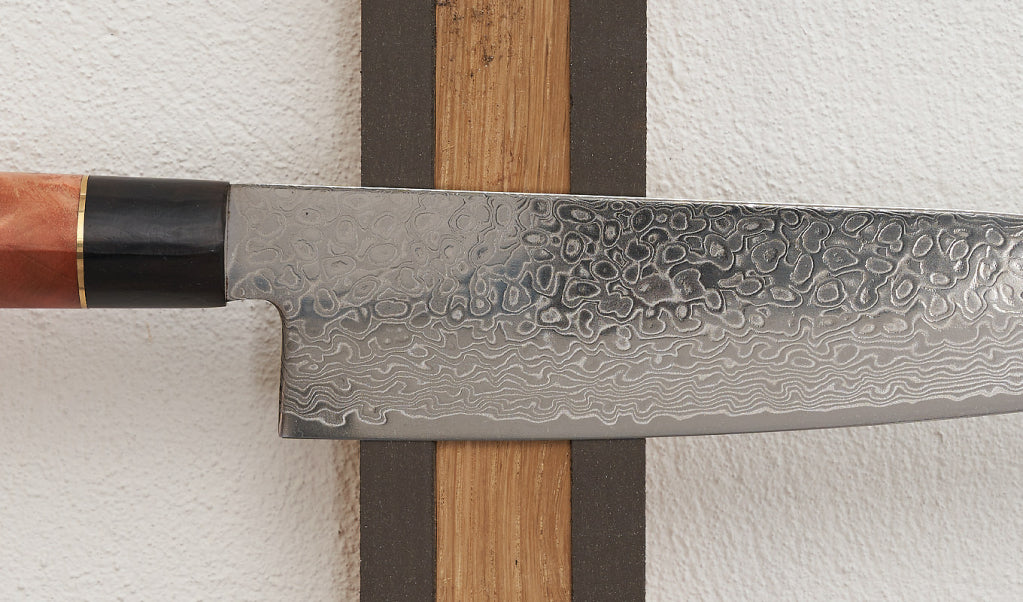
You also won’t find a serrated bread knife in a typical Japanese knife roll because they don’t have the culture of cooking with yeast.
Instead, you will find a selection of ‘willow’ blades; thin and sharp enough to slice through raw fish without leaving the slightest trace of a saw mark. These blades were designed to reduce the ‘stress’ on the fish. They are probably one of the most difficult knives to master. It takes five years of training to become a sashimi chef; 10 years to become an expert one.

In professional and domestic kitchens all over the world, there remains a culture and tradition of mastering the knife.
And this brings us on to the modern rituals of kitchen knives.
In professional and domestic kitchens all over the world, there remains a culture and tradition of mastering the knife.
In Japan, you might find an apprentice chef perfecting katsuramuki – unravelling a two-metre strip of radish (or another small vegetable) by rotating a thick single bevel usaba knife towards the thumb and peeling off the outer surface. This is a dangerous and difficult technique to learn, so it’s considered something of an initiation.
In China, a similar display of skill is seen when a chef carves a whole duck into exactly 100 even pieces at the table. The crispy skin of the duck is then dipped in sugar so that it dissolves in the mouth. Handling a blade with this ability takes years of practice and an affinity for the knife that is hard to put into words.
Some of these rituals date back a thousand years, spanning continents and cultures. There are romance and mystery to these stories. But none are as relevant as the personal rituals that we create. Whether we’re a commis chef, a butcher, or a home cook – we each have a unique relationship with the knives we use daily.
With repeated use, we develop at least a modest level of proficiency. We learn how to hone the blade on a ceramic rod or remove chips on a whetstone. We find enjoyment from cleaning them and drying their surface with a cotton cloth before returning them to the knife rack.
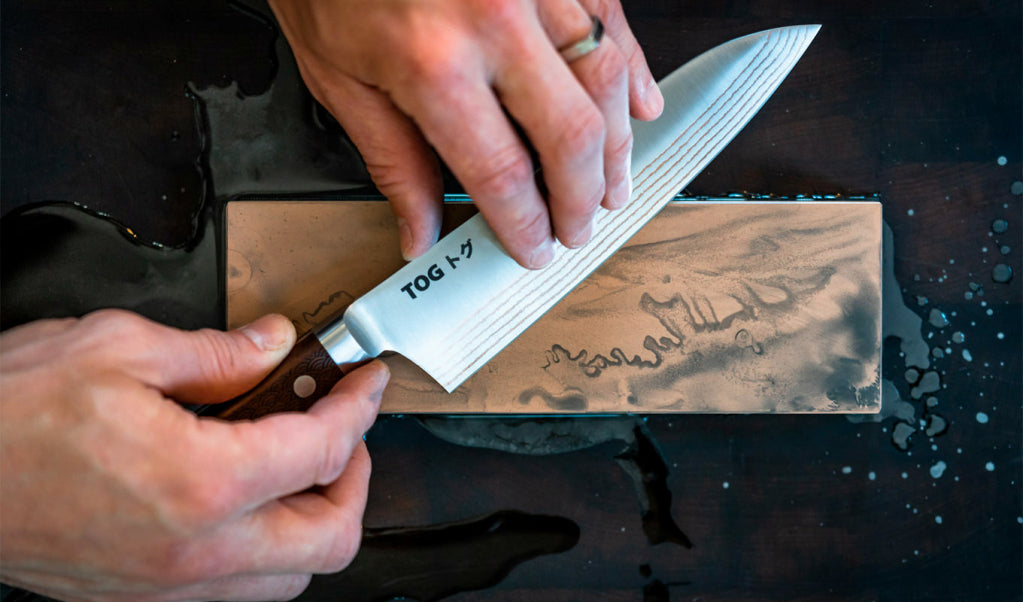
For most of us, this is the modern ritual of caring for our knives; keeping them sharp, keeping them within reach, and using them daily.
Honour the knife.


